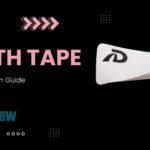A dentist sounds the alarm on an emerging oral appliance therapy workflow.
By Kent Smith, DDS, DABDSM
There is a concerning paradigm shift sprouting in dental sleep medicine: direct-to-physician and direct-to-consumer mail-order custom oral appliance therapy workflows.
On behalf of myself and other dental sleep medicine practitioners, I am raising the alarm for our physician colleagues and vendor partners. Yes, I am a dentist who owns a practice that treats sleep apnea patients, so I am not an unbiased party. But I write this article not as a self-serving endeavor but as a collective warning. Sleep physicians and oral appliance manufacturers must work together for our mutual benefit.
Will History Repeat Itself?
By bypassing the qualified dentist, these companies prey on our physician colleagues. Sleep physicians experience numerous external pressures of owning a private practice, including reduced reimbursement, increased regulatory requirements, and market consolidation within large medical groups. The lure of additional revenue via keeping oral appliance therapy in-house turns an eye, but at what risk?
I asked Mike Cowen, CEO of dental sleep medicine coaching company Awaken2Sleep, who has over 20 years of experience in the medical and dental sides of sleep medicine, what he thought of this potential shift. “We’ve seen this movie before,” Cowen told me. “In 2007, Medicare approved reimbursement for oral appliance therapy, then in 2010 expanded its coverage of home sleep tests. Dentists eager for a new opportunity to help patients and increase income began testing and treating their own patients, without the oversight of a sleep physician.”
Dentists thought: “Diagnosing apnea is as simple as reading the AHI number on a sleep report.” Big mistake. Now physicians may think: “Treating a patient with an oral appliance is just fitting a piece of plastic to their teeth.” Same mistake.
“I certainly hope the physicians of today are smart enough to learn from the mistakes they fought so hard to correct in their dental colleagues in times past,” Cowen said.
Another market tactic is to appeal directly to the unsuspecting public, removing both the physician and dentist from the equation.
As history is a great predictor of the future, we ought to look at similar models from our not-too-distant past as a tutor for today’s challenges. Though these business models seem de novo within the dental sleep medicine landscape, other fields have weathered all-too-similar challenges. For example, Smile Direct Club and Byte entered the orthodontic market, made money, and then abruptly exited stage left. I can see the same end game in our sleep industry.
Related Read for You:
Referring Oral Appliance Therapy to a Local Qualified Dentist Is Essential
Bypassing a local, qualified dental sleep medicine practitioner can compromise patient safety and the effectiveness of oral appliance therapy due to several factors:
- The foundation of oral appliance therapy is an in-person dental evaluation that assesses the patient’s oral and maxillofacial structures, evaluates the health of teeth, gums, and jaw joints, and determines candidacy for oral appliance therapy.
- Taking dental impressions or digital scans is not a simple task that can be delegated to the patient. Impressions/scans must be taken under dental supervision to ensure accuracy, comply with state licensure requirements, and capture the fine details. Dentists are trained to manage variations in patient anatomy and address issues such as a gag reflex, misaligned teeth, or abnormal bite patterns—all of which can significantly impact the quality of the impression. As author and dental sleep influencer Jason Tierney said in a LinkedIn post, “Sure, I can understand the convenience factor, but sleep apnea treatment isn’t a commodity; it’s not a 50-pack of toilet paper or a 10-pack of pie tins.”
Oral Appliance Design and Followup
Without knowledge of the patient’s physiological characteristics, an incorrect appliance design could be chosen. One direct-to-physician oral appliance workflow model offers only a single design. In the case of an incorrect design, once the physician files an oral appliance reimbursement code, the money for a properly designed replacement appliance can only come out of a patient’s pocket.
What’s more, non-sleep physicians, such as those in primary care, could unknowingly prescribe an oral appliance for a patient who needs CPAP therapy. Not only would this be a disservice to patients, but also, in areas where Medicare’s “same and similar rule” applies, it could not be rectified for five years.
Finally, patients must be longitudinally monitored for potential complications, such as temporomandibular joint disorders, tooth movement, or bite changes. Who will handle this in these workflows?
Potential Legal Ramifications
In addition to clinical risks, physicians involved in these models may face significant regulatory and legal consequences.
According to Ken Berley, DDS, JD, DABDSM, a practicing dentist and attorney, “Providing oral appliance therapy will expose a physician to unacceptable levels of risk, which could result in substantial liability. When the inevitable malpractice lawsuit happens, a physician may be shocked to find that he does not have insurance coverage for [oral appliance therapy].
“The practice of dental sleep medicine is outside the scope of practice for a physician, and malpractice insurance carriers include exclusions in all policies for any treatment provided that is outside the [scope of practice] of the insured physician. Additionally, if a physician were found to be practicing dentistry without a license, that is a felony.
“In my professional legal opinion, the risk associated with providing oral appliance therapy is significantly greater than any financial benefit a physician might receive.”
Many payor policies, including Medicare, explicitly state that oral appliances for obstructive sleep apnea must be provided and billed by qualified dental personnel. By billing for these services through a physician’s practice without appropriate dental involvement, physicians could violate Stark law, which prohibits physicians from referring patients for designated health services to entities with which they have a financial relationship unless certain exceptions are met.
Physicians who circumvent dentists for self-impression models are at high risk of takeback during audits. Moreover, if adverse patient outcomes arise, the potential for regulatory scrutiny and malpractice claims increases, further exposing physicians to financial and reputational harm.
I asked another attorney, Jayme R. Matchinski, JD, for her opinion. She told me, “Dental impressions should be provided by licensed and qualified dentists and health care providers. Beware of home dental impressions that are used as a diagnostic model for oral appliances because the home impression kits may violate applicable state and federal regulations and reimbursement guidelines.”
Final Thoughts
In summary, the use of mail-order self-impression kits for oral appliance therapy dodges steps that ensure patient safety, treatment efficacy, and minimal cost. In-person dental evaluations and supervised impressions or scans are critical to achieving successful outcomes in oral appliance therapy.
Physicians who engage in these alternative models not only risk patient safety but also expose themselves to legal liability, Stark law violations, and payor consequences.
To mitigate these risks, physicians and qualified dentists must collaborate when oral appliance therapy is recommended. By doing so, we protect our patients, our practices, and our professional reputations.
ID 189984452 © Olena Agapova | Dreamstime.com











Excellent article with insightful points. Many people mistakenly view this therapy as just a piece of plastic, reducing it to a mere commodity. This perspective can lead to significant financial and professional consequences.
Great point of view and specific views on why it’s important to keep this therapy with the qualified and trained dentists who not only work with customizing appliances but all moving parts In the mouth for the patients.
Love this. Fantastic article. I am with Stacey, too many think we are just handing out plastic. Thanks for getting this information out there!
This article addresses so many points to be truly considered. I am a DSM dentist and have been helping physicians with their cpap intolerant patients for over 20 years. It would be a major mistake to look at this cpap alternative therapy as not needing an experienced provider. There is more to this therapy than plastic over teeth. You have an entire environment of oral and TMJ health attached to that patient. If you don’t have extensive knowledge in oral health/dentition/Temperomandibular Joint health…it isn’t fair to the patient to take on the therapy.
The Dunning-Kruger effect states it well.
You don’t know what you don’t know until you are really in it. Years in it. I have been doing this 22 years… and feel I have so much to still learn.
https://en.wikipedia.org/wiki/Dunning%E2%80%93Kruger_effect
Well said Kent! I’m surprised companies think DTC models work in dentistry. History is going to repeat itself.
Spot on, doctor! I’ve been using an oral appliance for years, in addition to a BiPAP, and my wife uses one also now. I cannot imagine not having them custom -made by a knowledge & experienced dentist trained in the process of making and fitting them. I had my first two custom made by an Orthodontist, and my current one custom made by my dentist, who has a Masters in General Dentistry (MAGD), who has trained in to make and fit them.
Interesting points. However, very hard to read and get past your personal bias. I would do more research on these models before claiming certain statements.
The models have a licensed dentist assigned to every case who is monitoring the patient after receiving the device much more than the standard care of today. Disrupting the space means gentrification and industry improvement for the benefit of patients treatment, time, and finances.
Articles like this are just proving the point that these companies should continue the momentum and ignore those stuck in a similar mindset as you. Reluctant to change for the better at the sake of himself.
Clearly you are connected to one of these companies. I would suggest anyone considering this to look at the BBB complaints as well as other reviews for these company. No one could possibly argue that a patient taking their own impressions and not having a relationship with their provider overseeing their OAT could be a better model. This is financially driven. Period.
I am not sure you are coming across the way you mean. You seem to be advocating that the patient is cared for AFTER delivery. That is part of the problem the article discusses. What happens before? Who/how are these patients evaluated to standard of care when they are doing things themselves at home? Given your wording I am curious if you have anything to do with the DTC industry. If that is the case then disclosure, as was done in the article in question would have been great. But this model does not meet standard of care in most jurisdictions which is why the model comes with such significant risk.